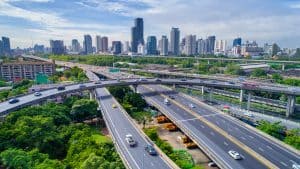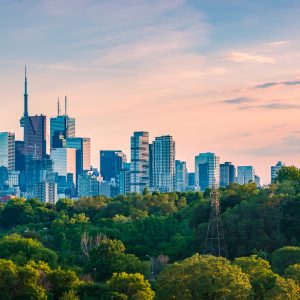Sustainable Urban Planning: What It Is and How It Can Be Done

More individuals have been migrating to urban areas, but cities may be ill-equipped to handle the rising population. In North America, the number of people living in urban areas has grown by nearly 20% compared to 2010.
And globally, 56% of the world's population now lives in urban areas.
However, a high-density population may cause city dwellers to suffer from poor air and water quality, waste management issues, and high levels of other pollution (in addition to climate change-causing carbon emissions).
Thus, sustainable urban planning must be implemented to manage and prepare for the rising amount of urban dwellers.
What is Sustainable Urban Planning?
Sustainability is a concept wherein a population’s present needs are addressed without compromising the future generations’ quality of life. This practice encourages government and municipal decision-makers to give equal consideration for the progression of both present and future generations as they plan new communities.
As such, sustainable cities are designed with long-term environmental and social impacts in mind so that citizens can enjoy a high quality of life even as the population rises. This is in contrast to poorly designed urban areas, which suffer from environmental issues and poor air and water quality and are ill-equipped to sustain large numbers of people.

Our article on Vauban, Germany, illustrates how urban planning can benefit the community. Case in point: every structure in the German town either produces similar or greater amounts of energy compared to its total energy consumption.
Moreover, residents can easily walk or cycle around Vauban through connected streets and designated paths. This sustainable urban planning practice improves the city dwellers’ living conditions, while shaping the neighborhood for future citizens.
The urban planning techniques of “filtered permeability” and "fused grid" were implemented in the municipality of Vauban's design. These urban planning terms refer to a town design of connected streets throughout the town, as well as plenty of pedestrian and bike paths. Urban planning led to a city layout in Vauban that lends itself to cycling as the primary mode of transit.
How Can Communities Create Sustainable Urban Areas?
- Work with Urban Development Professionals
Sustainable urban communities are intricately designed to facilitate the improvement of the people, the environment, and the economy. Therefore, communities and businesses need to consult with professionals who have an educational background in sustainable development when designing urban solutions. These professionals have a thorough understanding of economic and environmental issues, so they can design solutions that drive innovation and protect the environment at the same time.
Licensed civil engineers also need to work hand-in-hand with sustainable development experts as they develop new structures in urban areas. Engineering professionals play a huge role in sustainable urban development since they have the capacity to construct sustainable buildings that accommodate risk management, technological innovation, and environmental considerations.
- Create Green Spaces Within the City

With the help of these professionals, leaders can develop urban communities with more green spaces. Urban forests are critical in building resilient cities because they can soak up floodwater and combat climate change.
Moreover, surrounding concrete neighborhoods with green spaces can improve overall urban air and water quality, cooling urban areas, and reducing the "urban heat island" effect.
If spatial constraints exist, developers can also allow plants to grow on vertical buildings, train tracks, and even temples.
By repurposing deserted areas and properly designing new structures, we can create green spaces that enhance the health of present and future urban residents.
- Make Way for Sustainable Transportation Systems
 Finally, municipal urban planners must also improve city transportation networks to improve their sustainability. Poorly designed roads are primarily made for private vehicles, which increase carbon emissions and adversely affect the health of the citizens.
Finally, municipal urban planners must also improve city transportation networks to improve their sustainability. Poorly designed roads are primarily made for private vehicles, which increase carbon emissions and adversely affect the health of the citizens.
Conversely, sustainable urban areas have road networks and pathways that can accommodate different modes of travel.
Sustainable road networks allow for both private and public transportation systems. There should be pathways for pedestrians and cyclists, as well as lanes for mass sustainable public transit (such as electric light rail, electric trams, electric and hybrid busses, etc...). This can promote the productivity and health of commuters, while also ensuring their safety while traveling.
Sustainable urban planning improves present urban residents' quality of life while preparing for future dwellers' influx. Through good urban designs, leaders and developers can create cities that promote innovation, environmentalism, health, and safety.
Exclusively written for greencitytimes.com by Joan Higgins
Joan Higgins is a financial analyst specializing in climate change impacts and the green energy sector. She's worked for firms in the U.S., Canada, and Europe. Joan is currently a consultant for several clients on the West Coast.